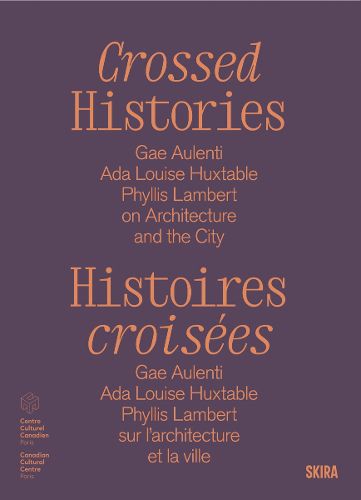Readings Newsletter
Become a Readings Member to make your shopping experience even easier.
Sign in or sign up for free!
You’re not far away from qualifying for FREE standard shipping within Australia
You’ve qualified for FREE standard shipping within Australia
The cart is loading…






The transformative influence of three pioneering women on the development of the postmodern city.
The book focuses on the impact of women on the postmodern city. To do so, it focuses on the personal and professional trajectories of three protagonists who, each in their own way, shaped the intellectual and physical environment of their city: journalist and architecture critic Ada Louise Huxtable, and American, Canadian and Italian architects Phyllis Lambert and Gae Aulenti.
All three share an ambivalent relationship with the concrete-and-steel architecture of the post-World War II modern movement, which was widely criticized in the 1960s for being alienating, standardized and anhistorical.Ada Louise Huxtable, through her articles in the New York Times architecture column; Gae Aulenti, with her conversion of the Gare d'Orsay into a museum and the Piazzale Cadorna in Milan; and Phyllis Lambert, with her philanthropic work and the founding of the Canadian Centre for Architecture in 1979.
Architecture is no longer seen through the prism of aesthetics, but through that of the cultural and environmental enhancement of public spaces. Through documentary and archival images, this catalogue documents this turning point in architectural history, when modernity returned to the architectural values of the past and the existing built environment. It also takes a more individual and biographical approach, crossing the paths of three women who played a major role in the construction of the post-modern city.
$9.00 standard shipping within Australia
FREE standard shipping within Australia for orders over $100.00
Express & International shipping calculated at checkout
The transformative influence of three pioneering women on the development of the postmodern city.
The book focuses on the impact of women on the postmodern city. To do so, it focuses on the personal and professional trajectories of three protagonists who, each in their own way, shaped the intellectual and physical environment of their city: journalist and architecture critic Ada Louise Huxtable, and American, Canadian and Italian architects Phyllis Lambert and Gae Aulenti.
All three share an ambivalent relationship with the concrete-and-steel architecture of the post-World War II modern movement, which was widely criticized in the 1960s for being alienating, standardized and anhistorical.Ada Louise Huxtable, through her articles in the New York Times architecture column; Gae Aulenti, with her conversion of the Gare d'Orsay into a museum and the Piazzale Cadorna in Milan; and Phyllis Lambert, with her philanthropic work and the founding of the Canadian Centre for Architecture in 1979.
Architecture is no longer seen through the prism of aesthetics, but through that of the cultural and environmental enhancement of public spaces. Through documentary and archival images, this catalogue documents this turning point in architectural history, when modernity returned to the architectural values of the past and the existing built environment. It also takes a more individual and biographical approach, crossing the paths of three women who played a major role in the construction of the post-modern city.